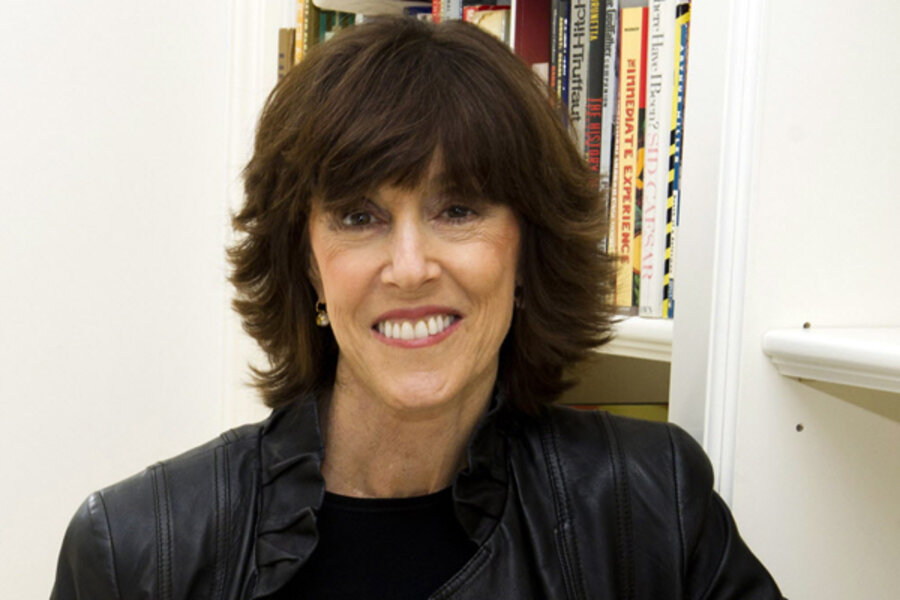Nora Ephron had rare, crowd-pleasing ability to mix humor and feminism
Loading...
| Los Angeles
Nora Ephron was talented in so many ways – as journalist, playwright, screenwriter, director, producer, novelist, blogger – that accolades are pouring in from across the spectrum of American culture with her passing Tuesday. Her filmography stretches from 1983’s “Silkwood,” for which she was nominated for an Oscar, to 2009’s “Julie & Julia.” She also published five essay collections after writing for such publications as Esquire, New York Magazine, and The New York Times Magazine.
It was not only what she produced that was so successful, but also that she broke barriers for women in Hollywood and elsewhere – while being the kind of model person that inspires others.
“All you ever heard about her were positive comments about her openness and fearlessness,” says writing professor Kathleen Volk Miller of Drexel University in Philadelphia, who has organized writers’ conferences for years. “Despite being one of the biggest and most prestigious names ever, she was one of the most down-to-earth and accessible people ever. That has left a lasting impression on me.”
“Accessible” is a word mentioned by several others as well.
“This is a woman who managed to blend the sophisticated witty dialogue and complex characters with the ability to appeal to an enormous mass audience, and that is easier said than done,” says Robert Thompson, founder of the Bleier Center for Television and Popular Culture at Syracuse University in New York.
He says her three films “When Harry Met Sally ...,” “Sleepless in Seattle,” and “You’ve Got Mail” will go down as the trilogy that established the model for the modern American romantic comedy in the feminist and post-feminist era. “They will be watched year after year after year and not just for film history classes,” he says.
She was a rare observer with wide versatility who was able to please both audiences and critics, says Wheeler Winston Dixon, professor of film studies at the University of Nebraska in Lincoln. “She had a deep understanding of film history, as well as a very firm sense of what is commercial and what isn’t,” he says. He notes that “You’ve Got Mail” is essentially a remake of “The Shop Around the Corner” with Jimmy Stewart and Margaret Sullavan.
Ms. Ephron was a trailblazer in Hollywood who helped pave the way for later greats including Tina Fey and Kristen Wiig, says Piper Weiss, senior features editor for Yahoo! Shine.
“Ephron came of age in Hollywood at a time when women in Hollywood weren’t funny, and so she presented a challenge to that,” Ms. Weiss says. “Writers in Hollywood now and women who love comedy owe her a debt of gratitude for breaking through and writing seminal comedies that touched both men and women in ways that transcend gender stereotypes.”
Ephron’s ability to be humorous while tackling controversial, important topics is also going to be a key legacy, some say. And that has enabled her to become a pivotal figure in feminism.
Many of her films could be classified as early "chick flick" films that paved the way for “third-wave feminism” movies and TV series such as "Sex and the City," "Bridget Jones’s Diary," and "Legally Blonde,” says Susan Mackey-Kallis, professor of film and media studies at Villanova University in Pennsylvania. These films often celebrate "girl power" and implicitly argue that femininity and feminism aren't necessary mutually exclusive, she says.
“Indeed, many of these films reclaim such terms as ‘chick’ and ‘girl,’ which were viewed negatively by 1970s second-wave feminists. All chick flick films are concerned with women's empowerment, women's stories, and the central role women play in each other’s lives,” Professor Mackey-Kallis says.
Ephron’s films are a bridge from the women's films and screwball comedies of the 1930s and ’40s, and they update those concerns to the ’70s and ’80s, also reaching the third-wave feminists who came later, she says.
“Taking ourselves too seriously” was a charge often leveled against second-wave feminists by third-wave feminists, says Mackey-Kallis.
“Through it all,” she says, “Ephron makes the emotional and sexual lives of women and men matter in ways that invest them with the seriousness they deserve and at the same time with the lightest of touches, lest we start to take ourselves too seriously.”







